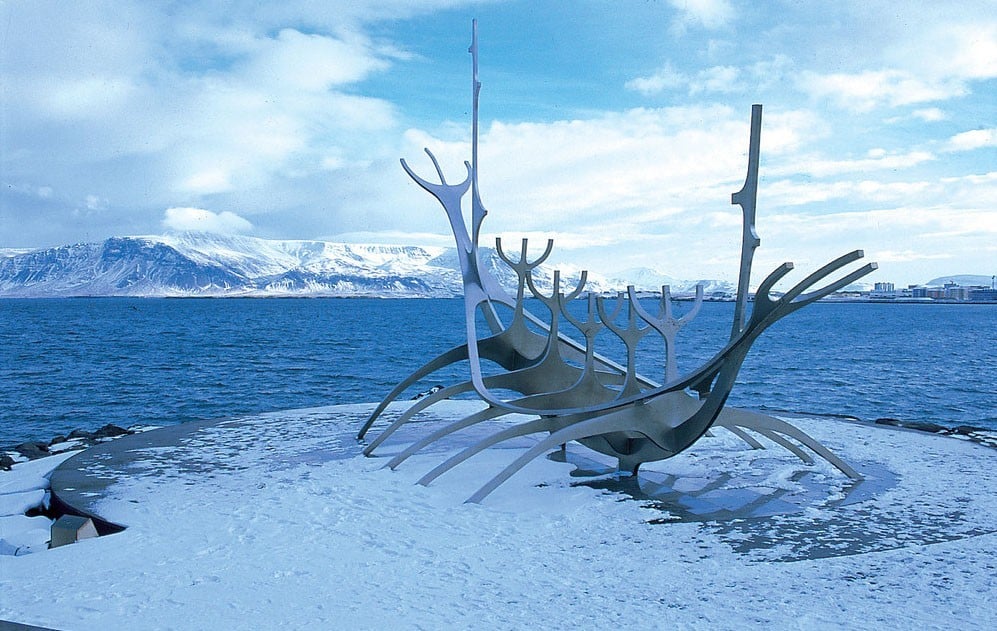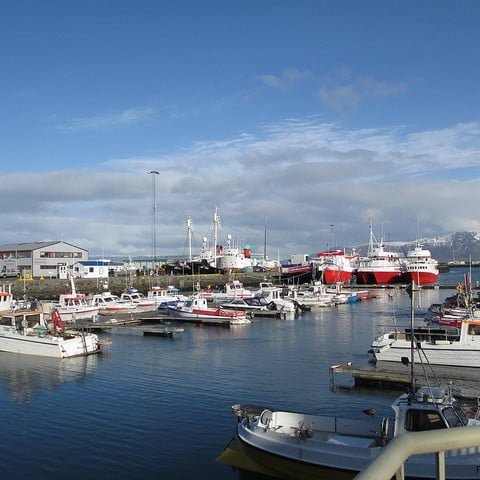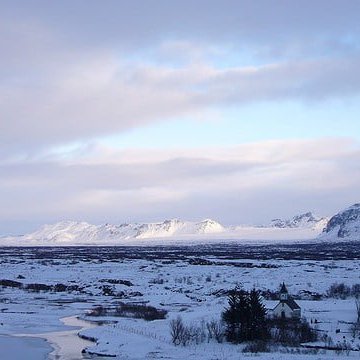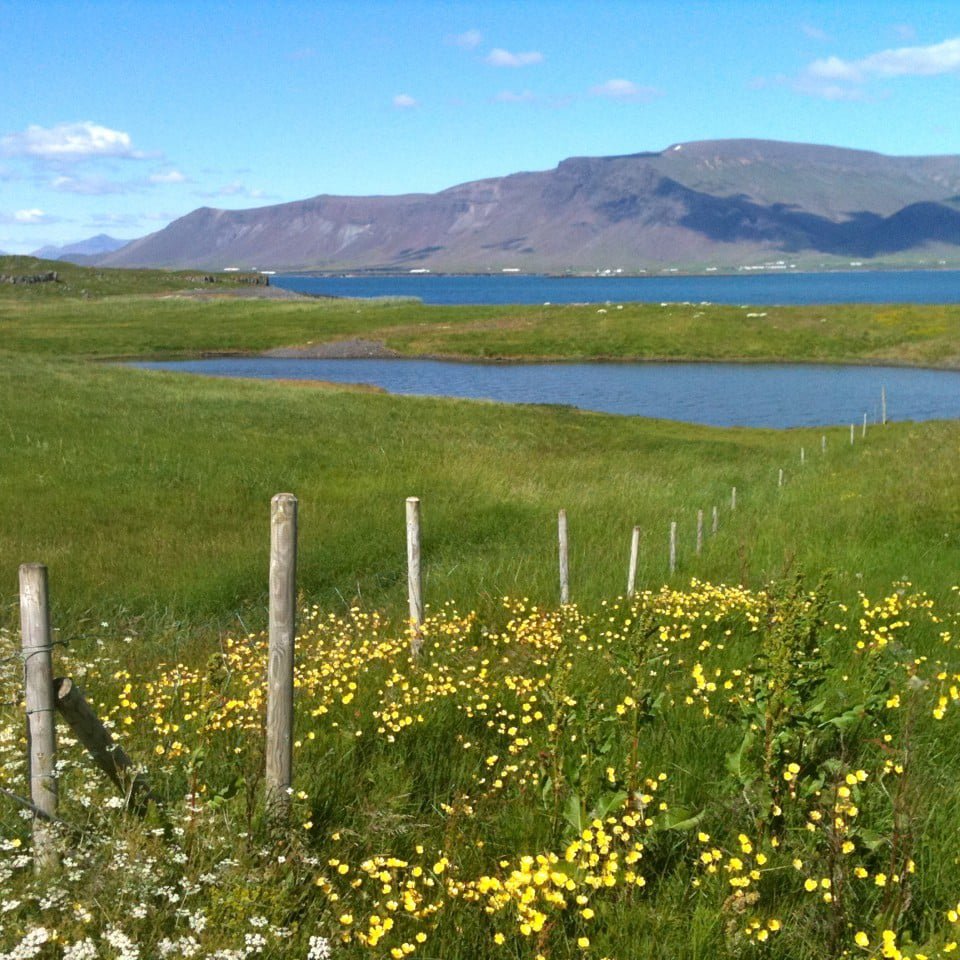Weather in Iceland in January
In Iceland, January is the coldest—and, on average, the snowiest—month of the year. But with the New Year here and many winter adventures to enjoy, there are good reasons to visit the Land of Fire and Ice.
In this guide, we share the details of the weather you can expect this month. And we’ll give some suggestions for what to get up to across the country.
What to expect from the weather in Iceland in January
Along with February, January is one of the two coldest months of the year. It’s usually the snowiest of months across the country, too.
Read on to discover in detail the kinds of weather you can expect.
What are the daylight hours in Iceland in January?
After December, the year has turned a corner, and by January, the days are getting longer again.
In Reykjavík, on January 1, the sun rises at 11:19, giving you plenty of time to sleep off your New Year’s hangover. But don’t lie in too long—as the sun sets once more at 15:44. Overall, you’ll have about 4.5 hours of daylight a day.
By the end of the month, there’s much more light in the sky. On January 31, the sun rises at 10:10 and sets at 17:12. So you’ll enjoy a total of 7 hours of daylight each day.
In the north, there are fewer hours of daylight at this time of year. In Akureyri, on January 1, the sun rises at 11:32 and sets at 15:00. At the end of the month, dawn is at 10:08, and the sun goes down again at 16:44.
What’s the temperature in Iceland in January?
In January, average temperatures in Iceland generally hover around freezing.
The daily mean in Reykjavík is 0.7°C (33.3°F) throughout the month, with average highs of 3.2°C (37.8°F) and average lows of –1.7°C (28.9°F). You should prepare for it to sometimes get colder than this though. The record low in January is –24.5°C (–12.1°F).
Expect lower temperatures in Akureyri. On average, the daily mean is –0.5°C (31.1°F), with average highs at 2.7°C (36.9°F) and average lows of –3.5°C (25.7°F).
These figures are temperatures within the city. But outside of the towns, it generally gets colder. So, if you’re going out into the countryside—such as touring the Ring Road or visiting the south coast—make sure to wrap up warm.
How much rain does Iceland get in January?
In January, Iceland gets a lot more snow than it gets rain.
In Reykjavík, you can expect 19.9mm (0.78 inches) of snow on average throughout the month, falling over 12.2 snowy days. Of course, when temperatures are higher, you can get rain too.
Akureyri and the north of Iceland tend to be drier than the capital region, but January bucks the trend. You can expect 22 days of snow across the month—meaning that most days are pretty snowy!
What to get up to in Iceland in January
As you’ve seen, January in Iceland is typically cold and snowy. But that shouldn’t keep you away. With our landscapes painted white throughout the month and the northern lights glowing in the sky, there’s lots to get your inspired and entertained.
1. Hunt the northern lights
In Iceland, the winter is northern lights season in Iceland. While you can glimpse the breathtaking display of the aurora borealis from September to April, the months of November, December, and January—the darkest months of the year—tend to have the best conditions.
So, visit in January to witness this extraordinary extraterrestrial phenomenon. There are few experiences quite as inspiring as seeing these multi-colored curtains of light shine above your heads.
Get out of the city to see the display at its best (in towns, the lights of buildings and cars tend to obstruct the view). Instead, find somewhere dark on a night when the sky is forecast to be clear.
You can use tools such as Aurora Forecast to understand the best conditions across the country. It will give you a live and detailed picture of the cloud cover and solar activity so you can find the top spot each night.
Alternatively, join a northern lights tour to see the aurora borealis with an expert guide.
2. Head into the outdoors
It might be cold out but, with the country covered in snow, a trip outdoors is a must on your winter trip to Iceland. There are many activities and destinations for you to choose from.
For instance, head to the Golden Circle to enjoy Þingvellir National Park or the mighty Gullfoss waterfall draped in its white winter coat. Or tour West Iceland, with the mighty Snæfellsjökull volcano, for spectacular views and black-sand beaches. In this season, you can still also tour the Ring Road, the circular route that loops the entire island.
If you’re looking for an active adventure, why not try a glacier hike? On a glacier tour, you’ll be taken across one of Iceland’s enormous ice caps. It’s an opportunity to explore an otherworldly icy expanse that you’ll find in few other countries on earth.
Explore our full range of tours to find the right adventure for you.
3. Relax in an Icelandic spa
Iceland’s spas are an unforgettable experience at any time of year. But there’s something extra special about kicking back in a geothermal spa while the snow falls around you.
The Blue Lagoon is one of the best places for it. With its therapeutic blue waters—and its location in the heart of an active volcanic landscape—it offers a luxurious, unique, and authentic Icelandic experience.
You have other spas to choose from across the country, too. For instance, head to the north to indulge at Geosea, with its infinity pool that overlooks the Arctic Ocean. Or visit Mývatn Nature Baths for a naturally heated spring.
On your stay in Iceland, you may want a spa a little closer to home. If that’s the case, why not book a hotel with luxurious spa facilities on site?
At Berjaya, our hotels are equipped with state-of-the-art spas where you can unwind in peace at any time that suits you.
4. Check out local festivals and events
While it might be dark in Iceland, there are a lot of exciting things happening across the country:
- Icelandic New Year kicks off the month with bonfires, fireworks, and a long night of partying.
- The 13th day of Christmas, or Þrettándinn, takes place on January 6, marking the end of the festive season. Aside from curious mythological phenomena taking place—such as cows gaining the ability to speak—there are many events to get involved in.
- Dark Music Days is a festival of contemporary music held at the Harpa concert hall throughout the month.
- Reykjavík International Games is a diverse sports competition that takes place over two weeks in January and February. Expect athletics, weight-lifting, martial arts, and more.
- Þorrablót is a mid-winter feast that takes place in Iceland’s old calendar during the month of Þorri. Typically, it kicks off in late January, and a traditional Icelandic meal is the main event. Expect delicacies such as smoked lamb, blood pudding, and boiled sheep’s head.
To get a glimpse of traditional and contemporary Icelandic culture, January is a great time to visit!
Tips for enjoying Iceland in winter
The weather won’t stop you from having an unforgettable time in Iceland in January. But to stay safe and comfortable throughout your trip, it’s worth keeping some key pieces of advice in mind.
- Know where to find information on weather forecasts and travel conditions. The Icelandic Met Office is your best resource for accurate weather information. But if you’re travelling across the country, you’ll want to stay up to date on road conditions, too. Visit road.is for the most reliable updates.
- Come well-equipped for the activities you have planned. Whether you want to stay in Reykjavík to enjoy Icelandic culture or head into the outdoors, pack for your plans. At a minimum, warm clothes, waterproof layers, and sturdy shoes are a must.
- Stay informed about northern lights conditions. Tools like Aurora Forecast are indispensable for finding the best spots to see the northern lights. It can be useful to join Facebook groups where people share their sightings in real-time too. Alternatively, book a northern lights tour to be led by an expert guide.
One final word of advice: book your accommodation, activities, and anything else you have planned far in advance. Even if January is the low season, you don’t want to be disappointed.
Quick summary: Why January is a great time to visit Iceland
It might be the depths of winter, but January is still an incredible time to visit Iceland. With plentiful snow, the northern lights, and many local events throughout the month, you’ll find lots to keep you entertained.
At Berjaya, we’re committed to helping you have an unforgettable trip, no matter when you visit the Land of Fire and Ice. Explore our range of hotels to book your stay.
FAQs
Is January a good time to visit Iceland?
January is an underrated yet wonderful time to visit Iceland. It’s a snowy season when Iceland is beautiful in its winter coat. But it’s the ideal time to see the northern lights—and experience the local culture—too.
What’s Iceland’s weather like in January?
Typically, January weather in Iceland is cold, snowy, and changeable. Average temperatures sit around freezing, and you can expect snow on the majority of days throughout the month.
That said, you can get clear skies, sunny days, and sometimes warmer temperatures too.
What to do in Iceland in January?
There are many activities you can try in Iceland in January:
- See the northern lights
- Take part in traditional events, such as Þorrablót or the Thirteenth of Christmas
- Visit an authentic Icelandic spa
- Tour the outdoors
Can you see the northern lights in Iceland in January?
As one of the darkest months of the year in Iceland, January is an ideal time to see the northern lights. We can’t guarantee it, of course, as it’s a natural phenomenon, but the dark skies give you a very good chance.
How should I dress for the weather in Iceland in January?
The simple answer is: dress to stay warm and dry. With snow and low temperatures the norm, you’ll want a warm and waterproof jacket, and lots of warm layers too.
Is it common to experience rain in January in Iceland?
You can get rain in January, but snow is much more likely. Either way, remember to pack a waterproof jacket!
Are there any specific weather-related travel advisories for Iceland in January?
In January, the weather can be quite extreme, with heavy snow and sometimes very low temperatures. If you’re driving, particularly on the south coast, high winds can be a factor when travelling too. Check out the forecast at the Icelandic Met Office before heading out.
Can I go glacier hiking in Iceland in January?
You can go glacier hiking in January. However, it’s an activity that’s quite weather-dependent, so check the forecast before you book a trip. On a good day, the views across the ice caps are breathtaking.
Is January a good time for whale watching in Iceland?
Typically, the summer is the best time to see whales in Iceland. This is when the whales come north to Icelandic waters to feed on our abundant fish stocks.
Don’t let that put you off going whale watching In the winter, though. Orcas, humpbacks, and minkewhales are still common in this season.
How do the weather conditions in January affect driving in Iceland?
If you’re driving in January in Iceland, be prepared for winter conditions. Snow, black ice, and heavy winds can make driving challenging.
Please check the forecast before travelling. If you’re not comfortable driving in winter conditions, it’s a good idea to join a guided tour instead.
Are outdoor activities like hiking and hot springs recommended in January?
January is a great time for outdoor activities. However, hiking is a very different challenge in winter than in summer conditions. You’ll need to be equipped with warmer clothes, allow more time for your route, and be experienced in walking in the snow.
If you don’t have the experience yourself, join a guided group tour. On a guided glacier hike, for instance, you’ll be provided with all the equipment you need, and you’ll have an expert to lead you across the landscape.
What’s the best way to stay up to date on the weather in Iceland in January?
The best resources available to keep track of the weather are the websites of the Icelandic Met Office and the Icelandic Road and Coastal Administration.






